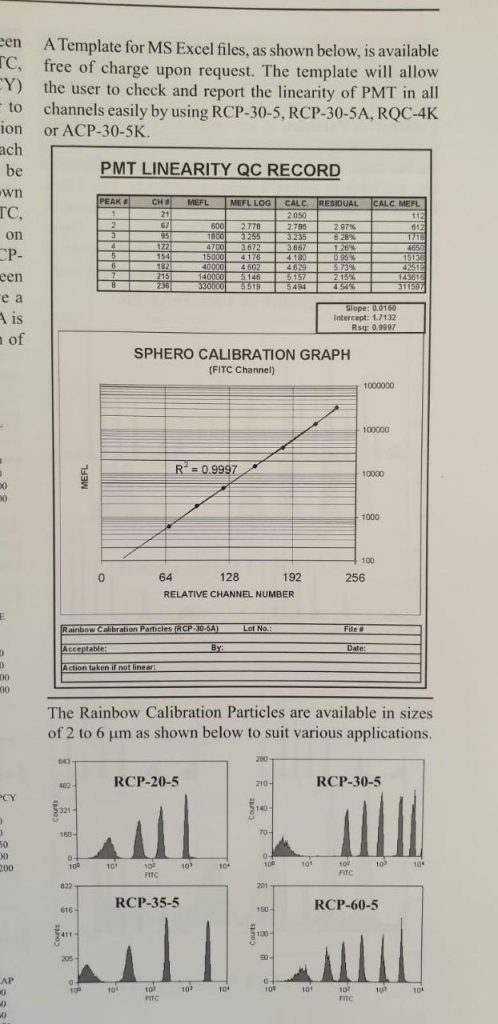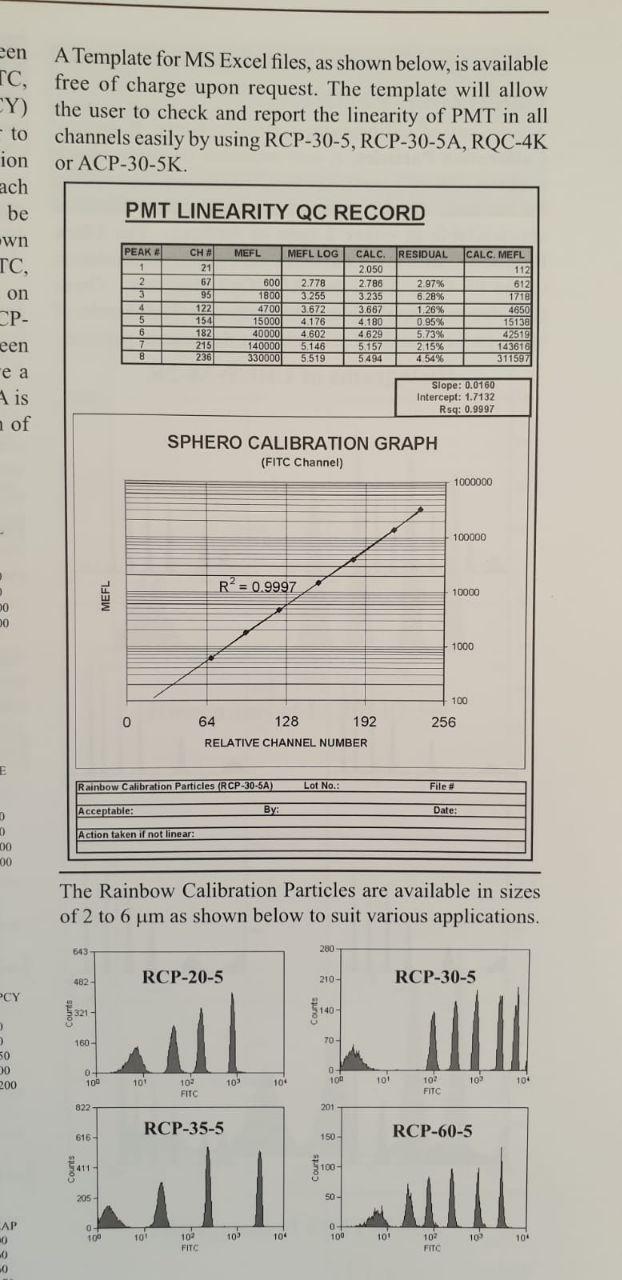Alzheimer’s disease (AD) is the leading cause of dementia. So far, 99.6% of the clinical trials, including those targeting the energy metabolism, have failed to mobilize disease-modifying properties. altered mitochondrial function and disorders of the brain bioenergy systems have long-documented as early events during the development of AD pathology.
The latest progress: While therapeutic approaches that directly promote mitochondrial bioenergetic machine or eliminating reactive oxygen species exhibited limited translatability, emerging strategies targeting non-energetic aspects of mitochondrial provide a new therapeutic target with the potential to modify the risk of AD and development. Growing evidence also reveals an important relationship between mitochondrial phenotype and neuroinflammation via cells.Herein glial metabolic reprogramming, we summarize the main class of mitochondrial-based therapeutic strategies AD. Moreover, the difference in their success when translated from preclinical models to clinical trials aimed. key factors that distinguish the response to the intervention of bioenergy, including sex, APOE genotype and cellular diversity in the brain, which discussed.
We proposes that the future development of AD mitochondrial targeted therapy should consider the interaction between bioenergetics and mechanisms of other diseases that may require specific types of targeting cell- to distinguish between neurons and cells of non-neural. In addition, a successful strategy will likely include stratification by metabolic phenotype that varies by gender and genetic risk profile and dynamic change throughout the course of the disease. As the network expands in intracellular mitochondria integration and systems biology level, intended- votes, either, compared to unintended consequences, bad, will be required to achieve the therapeutic potential of mitochondria.
Mitochondria Targeted Therapeutics for Alzheimer’s Disease: The Good. The Bad. The Potential. Mitochondrial dysfunction in metabolic disorders associated with age.
Aging is a natural biological processes within an organism that is characterized by bioenergetics and downs of life. Mitochondria are important for cellular bioenergetics and thus an important contributor to age-related damage energetics.
In addition, mitochondria play a major role in calcium signaling, redox homeostasis, and thermogenesis makes this organelle major cellular components that dictate the fate of cells. To maintain the quantity and quality, mitochondria undergo several processes such as fission, fusion and mitophagy to remove or replace the faulty mitochondria. While the machine is properly protected bioenergetics, functional decline associated with age and metabolic diseases associated with age is largely the result of a failure in the protective mechanism.
In addition, the byproducts of metabolism such as reactive oxygen species are also helpful in this damaging path. Mitochondrial dysfunction is always considered to be associated with the disease. In addition, studies in recent years have shown that aging contributes to the decay of mitochondrial health by promoting the imbalance in the mitochondrial pathway-arranged keys. Thus, it is important to understand the nexus of mitochondrial dysfunction and age-related diseases. This review focuses on the various aspects of mitochondrial biology and status on the basis of aging and metabolic diseases associated with age. This article is protected by copyright. All rights reserved.
EXO-Prep for exosome isolation from Urine
HBM-EXP-U25
HansaBioMed
30 ml (25 react)
EUR 234.36
ExoPure? Reagent (Overall Exosome Isolation, urine)
M1003-25
Biovision
each
EUR 992.4
ExoPure? Reagent (Overall Exosome Isolation, urine)
M1003-50
Biovision
each
EUR 1083.6
ExoQualiTM Overall Exosome Isolation Reagent (from urine)
CEIK-046L-10T
Creative Bioarray
10 T
Ask for price
ExoQualiTM Overall Exosome Isolation Reagent (from urine)
CEIK-046L-24T
Creative Bioarray
24 T
Ask for price
ExoQualiTM Overall Exosome Isolation Immunoplates (from Urine)
CEIK-096L-96wells
Creative Bioarray
96 wells
Ask for price
Exosome isolation Solution - Cell Media/ Urine (easy version of P100, 95% pure exosome)
P100EZ
101Bio
-
Ask for price
Exosome Isolation Kit for Cell Culture Supernatant,Serum,Plasma,Breast Milk,Urine,Saliva,Yeast, Plant
CSB-EI0102
Cusabio
2T
EUR 340
Exosome Isolation Kit for Cell Culture Supernatant,Serum,Plasma,Breast Milk,Urine,Saliva,Yeast, Plant
CSB-EI0110
Cusabio
10T
EUR 1050
Exosome isolation Solution - Cell Media/ Urine (easy version of P100, 95% pure exosome) sample
P100EZ-sample
101Bio
-
Ask for price
ExoPure? 0.4 micron Immunobeads (Overall Exosome Isolation, plasma, urine, serum)
M1038-10
Biovision
each
EUR 1005.6
ExoPure? 0.4 micron Immunobeads (Overall Exosome Isolation, plasma, urine, serum)
M1038-20
Biovision
each
EUR 1546.8
ExoPure? 0.4 micron Immunobeads (Overall Exosome Isolation, plasma, urine, serum)
M1038-3
Biovision
each
EUR 523.2
ExoPure? 0.4 micron Immunobeads (Overall Exosome Isolation, plasma, urine, serum)
M1038-5
Biovision
each
EUR 796.8
ExoPure? Immunoplates (Overall Exosome Isolation, plasma, urine, colorimetric assay)
M1004-100-T
Biovision
each
EUR 1136.4
ExoPure? Immunoplates (Overall Exosome Isolation, plasma, urine, luminometric assay)
M1005-100-W
Biovision
each
EUR 888
ExoPure? Immunoplates (Overall Exosome Isolation, plasma, urine, fluorometric assay)
M1006-100-B
Biovision
each
EUR 888
Exosome Isolation kit (for serum & plasma)
P101
101Bio
10 rxn
EUR 199
Exosome Isolation kit (for serum & plasma)
P101L
101Bio
40 rxn
EUR 769
Exosome Isolation kit (for serum & plasma)
P101S
101Bio
2 rxn
EUR 69
ExoQualiTM Human Exosome Capture and Isolation Kits (for Cell Culture Media/ Urine) (CD9 Capture Beads)
CEIK-097L-10T
Creative Bioarray
10T
Ask for price
ExoQualiTM Human Exosome Capture and Isolation Kits (for Cell Culture Media/ Urine) (CD63 Capture Beads)
CEIK-098L-10T
Creative Bioarray
10T
Ask for price
ExoQualiTM Human Exosome Capture and Isolation Kits (for Cell Culture Media/ Urine) (CD81 Capture Beads)
CEIK-099L-10T
Creative Bioarray
10T
Ask for price
ExoQualiTM Mouse Exosome Capture and Isolation Kits (for Cell Culture Media/ Urine) (mCD9 Capture Beads)
CEIK-104L-10T
Creative Bioarray
10T
Ask for price
Exosome Isolation Kit
E601E001
EnoGene
20 tests
EUR 2500
ExoQualiTM Mouse Exosome Capture and Isolation Kits (for Cell Culture Media/ Urine) (mCD63 Capture Beads)
CEIK-105L-10T
Creative Bioarray
10T
Ask for price
Exosome Isolation kit (for serum & plasma -Exosome-RNA-NGS)
P101NGS
101Bio
-
Ask for price
ExoQualiTM Mouse Exosome Capture and Isolation Kits (for Cell Culture Media/ Urine) (mCD9/CD63 Capture Beads)
CEIK-106L-10T
Creative Bioarray
10T
Ask for price
ExoPure? 1.0 micron Immunobeads (Overall Exosome Isolation, plasma, urine, serum, 10 reactions)
M1039-10
Biovision
each
EUR 1005.6
ExoPure? 1.0 micron Immunobeads (Overall Exosome Isolation, plasma, urine, serum, 20 reactions)
M1039-20
Biovision
each
EUR 1546.8
ExoPure? 1.0 micron Immunobeads (Overall Exosome Isolation, plasma, urine, serum, 3 reactions)
M1039-3
Biovision
each
EUR 523.2
ExoPure? 1.0 micron Immunobeads (Overall Exosome Isolation, plasma, urine, serum, 5 reactions)
M1039-5
Biovision
each
EUR 796.8
Exosome Isolation kit (for cell culture media)
P100
101Bio
10 rxn
EUR 199
Exosome Isolation kit (for cell culture media)
P100L
101Bio
40 rxn
EUR 769
Exosome Isolation kit (for cell culture media)
P100S
101Bio
2 rxn
EUR 69
ExoQualiTM Human Exosome Capture and Isolation Kits (for Cell Culture Media/ Urine) (CD9/CD63/CD81 Capture Beads)
CEIK-100L-10T
Creative Bioarray
10T
Ask for price
Exosome Isolation kit (for stem cell culture media)
P107
101Bio
10 rxn
EUR 199
Exosome Isolation kit (for stem cell culture media)
P107S
101Bio
2 rxn
EUR 69
Exosome Isolation kit (forHuman Body Fluid)
P121
101Bio
10 rxn
EUR 199
Exosome Isolation kit (forHuman Body Fluid)
P121L
101Bio
40 rxn
EUR 769
Exosome Isolation kit (forHuman Body Fluid)
P121S
101Bio
2 rxn
EUR 69
GPC1 Capture Exosome Isolation Kit
E601E004
EnoGene
20 tests
EUR 2500
CD63 Capture Exosome Isolation Kit
E601E005
EnoGene
20 tests
EUR 2500
CD81 Capture Exosome Isolation Kit
E601E006
EnoGene
20 tests
EUR 2500
Breast cancer Exosome Isolation Kit
E601E002
EnoGene
20 tests
EUR 2500
EPCAM Capture Exosome Isolation Kit
E601E003
EnoGene
20 tests
EUR 2500
HSP70 Capture Exosome Isolation Kit
E601E007
EnoGene
20 tests
EUR 2500
ExoQualiTM Exosome Isolation Kit (Serum)
CEIK-005L-10T
Creative Bioarray
10 T
Ask for price
ExoQualiTM Exosome Isolation Kit (Serum)
CEIK-005L-30T
Creative Bioarray
30 T
Ask for price
ExoQualiTM Exosome Isolation Kit (Plasma)
CEIK-004L-10T
Creative Bioarray
10 T
Ask for price
ExoQualiTM Exosome Isolation Kit (Plasma)
CEIK-004L-30T
Creative Bioarray
30 T
Ask for price
ExoQualiTM Exosome Isolation Kit (Cell Media)
CEIK-001L-10T
Creative Bioarray
10 T
Ask for price
ExoQualiTM Exosome Isolation Kit (Cell Media)
CEIK-001L-30T
Creative Bioarray
30 T
Ask for price
ExoPure? Isolation Kit (Urine)
K1240-10
Biovision
each
EUR 836.4
ExoPure? Isolation Kit (Urine)
K1240-2
Biovision
each
EUR 483.6
EXO-Prep for exosome isolation from Cell Media
HBM-EXP-C25
HansaBioMed
25 ml (25 react)
EUR 234.36
ExoQualiTM Exosome Isolation Kit (Plasma & Serum)
CEIK-006L-10T
Creative Bioarray
10 T
Ask for price
ExoQualiTM Exosome Isolation Kit (Plasma & Serum)
CEIK-006L-30T
Creative Bioarray
30 T
Ask for price
ExoQualiTM Exosome Isolation Kit (All in one)
CEIK-008L-10T
Creative Bioarray
10 T
Ask for price
ExoQualiTM Exosome Isolation Kit (All in one)
CEIK-008L-30T
Creative Bioarray
30 T
Ask for price
ExoQualiTM Exosome Isolation Kit (Stem Cell Media)
CEIK-002L-10T
Creative Bioarray
10 T
Ask for price
ExoQualiTM Exosome Isolation Kit (Stem Cell Media)
CEIK-002L-30T
Creative Bioarray
30 T
Ask for price
EXO-Prep for exosome isolation from Plasma and serum
HBM-EXP-B5
HansaBioMed
5 ml
EUR 181.44
ExoQualiTM Exosome Isolation Kit (other body fluids)
CEIK-007L-10T
Creative Bioarray
10 T
Ask for price
ExoQualiTM Exosome Isolation Kit (other body fluids)
CEIK-007L-30T
Creative Bioarray
30 T
Ask for price
Urine DNA Isolation Kit
K5011150
Biochain
1 kit
EUR 261
XCF COMPLETE Exosome and cfDNA Isolation Kit (for Serum and Plasma)
XCF100A-1
SBI
20 rxn
EUR 583
ExoQuick-LP for lipoprotein pre-clear & exosome isolation
EXOLP5A-1
SBI
5 reactions
EUR 473
Easy-Exo® Saliva Exosome Isolation Kit, 95% pure
P530
101Bio
20 rxn
EUR 399
Easy-Exo® Saliva Exosome Isolation Kit, 95% pure
P530S
101Bio
2 rxn
EUR 169
Reagent for Total Exosome Isolation (Culture Media Supplement)
EIR-02
Creative Biolabs
50 ml
EUR 2485.2
Description: This product is used for isolating exosomes from culture media supplement based on chemical precipitation isolation method.
VEX Exosome Isolation Reagent (from serum)
R602
Vazyme
10 ml
EUR 769.2
VEX Exosome Isolation Reagent (from plasma)
R603
Vazyme
10 ml
EUR 769.2
ExoQuick Exosome Isolation and RNA Purification kit (for Serum and Plasma)
EQ806A-1
SBI
20 preps
EUR 493
ExoQuick Exosome Isolation and RNA Purification kit (for Tissue Culture Media)
EQ806TC-1
SBI
10 preps
EUR 493
FitAmp Urine DNA Isolation Kit
P-1017
EpiGentek
Ask for price
Ask for price
Ask for price
100 Samples 50 Samples 100 Samples
ExoPure? Reagent (Overall Exosome Isolation, cell media)
M1002-25
Biovision
each
EUR 992.4
ExoPure? Reagent (Overall Exosome Isolation, cell media)
M1002-50
Biovision
each
EUR 1083.6
T-Pro Total Exosome Isolation reagent (from serum)
JO66-V002M
T-Pro Biotechnology
25ml/BT
EUR 800
T-Pro Total Exosome Isolation reagent (from serum)
JO66-V002S
T-Pro Biotechnology
1ml*5/set
EUR 200
Exosome isolation Solution - Serum/ Plasma (easy version of P101, 95% pure exosome)
P101EZ
101Bio
-
Ask for price
ExoQualiTM Overall Exosome Isolation Reagent (from serum)
CEIK-044L-30T
Creative Bioarray
30 T
Ask for price
ExoQualiTM Overall Exosome Isolation Reagent (from serum)
CEIK-044L-50T
Creative Bioarray
50 T
Ask for price
VEX Exosome Isolation Reagent (from cell culture media)
R601
Vazyme
50 ml
EUR 706.8
ExoQualiTM Overall Exosome Isolation Reagent (from plasma)
CEIK-045L-30T
Creative Bioarray
30 T
Ask for price
ExoQualiTM Overall Exosome Isolation Reagent (from plasma)
CEIK-045L-50T
Creative Bioarray
50 T
Ask for price
MinuteTM Hi-Efficiency Saliva Exosome Isolation Kit (50 Tests) (Non-PEG)
SE-030
Inventbiotech
each
EUR 330
ExoPure? Reagent (Overall Exosome Isolation, biological fluids)
M1001-10
Biovision
each
EUR 796.8
ExoPure? Reagent (Overall Exosome Isolation, biological fluids)
M1001-20
Biovision
each
EUR 1260
ExoPure? Reagent (Overall Exosome Isolation, biological fluids)
M1001-5
Biovision
each
EUR 633.6
ExoQualiTM Overall Exosome Isolation Immunoplates (from Serum)
CEIK-023L-96wells
Creative Bioarray
96 wells
Ask for price
ExoQualiTM Overall Exosome Isolation Immunoplates (from Saliva)
CEIK-026L-96wells
Creative Bioarray
96 wells
Ask for price
ExoQualiTM Overall Exosome Isolation Immunoplates (from Plasma)
CEIK-095L-96wells
Creative Bioarray
96 wells
Ask for price
Exosome isolation Solution - Serum/ Plasma (easy version of P101, 95% pure exosome) sample
P101EZ--sample
101Bio
-
Ask for price
ExoQuick-CG cGMP-grade Exosome Isolation reagent (50 ml)
EXOCG50A-1
SBI
50 ml
EUR 1106
ExoQualiTM Human Exosome Capture and Isolation Kits (for Serum/Plasma) (CD9 Capture Beads)
CEIK-101L-10T
Creative Bioarray
10T
Ask for price
ExoQualiTM Human Exosome Capture and Isolation Kits (for Serum/Plasma) (CD63 Capture Beads)
CEIK-102L-10T
Creative Bioarray
10T
Ask for price
ExoQualiTM Overall Exosome Isolation Immunoplates (from Cell Media)
CEIK-029L-96wells
Creative Bioarray
96 wells
Ask for price
T-Pro Total Exosome Isolation reagent (from cell culture media)
JO66-V001M
T-Pro Biotechnology
500ml/BT
EUR 800
T-Pro Total Exosome Isolation reagent (from cell culture media)
JO66-V001S
T-Pro Biotechnology
100ml/BT
EUR 200
TumorExoPure? Immunoplates (Exosome Isolation, plasma, colorimetric assay)
M1016-100-T
Biovision
each
EUR 874.8
TumorExoPure? Immunoplates (Exosome Isolation, plasma, luminometric assay)
M1017-100-W
Biovision
each
EUR 888
TumorExoPure? Immunoplates (Exosome Isolation, plasma, fluorimetric assay)
M1018-100-B
Biovision
each
EUR 888
GlialExoPure? Immunoplates (Exosome Isolation, plasma, colorimetric assay)
M1022-100-T
Biovision
each
EUR 888
GlialExoPure? Immunoplates (Exosome Isolation, plasma, luminometric assay)
M1023-100-W
Biovision
each
EUR 888
GlialExoPure? Immunoplates (Exosome Isolation, plasma, fluorimetric assay)
M1024-100-B
Biovision
each
EUR 888
ExoQualiTM Overall Exosome Isolation Reagent (from other body fluids)
CEIK-047L-10T
Creative Bioarray
10 T
Ask for price
ExoQualiTM Overall Exosome Isolation Reagent (from other body fluids)
CEIK-047L-24T
Creative Bioarray
24 T
Ask for price
NeuralExoPure? Immunoplates (Exosome Isolation, plasma, colorimetric assay)
M1019-100-T
Biovision
each
EUR 907.2
NeuralExoPure? Immunoplates (Exosome Isolation, plasma, luminometric assay)
M1020-100-W
Biovision
each
EUR 888
NeuralExoPure? Immunoplates (Exosome Isolation, plasma, fluorimetric assay)
M1021-100-B
Biovision
each
EUR 888
ExoQualiTM Human Exosome Capture and Isolation Kits (for Serum/Plasma) (CD9/CD63 Capture Beads)
CEIK-103L-10T
Creative Bioarray
10T
Ask for price
ExoQualiTM Overall Exosome Isolation Reagent (from cell culture media)
CEIK-043L-10T
Creative Bioarray
10 T
Ask for price
ExoQualiTM Overall Exosome Isolation Reagent (from cell culture media)
CEIK-043L-24T
Creative Bioarray
24 T
Ask for price
MinuteTM Hi-Efficiency Exosome Isolation Reagent (20 ml) (Non-PEG)
EI-027
Inventbiotech
each
EUR 345
ExoPure? Immunoplates (Overall Exosome Isolation, serum, colorimetric assay)
M1007-100-T
Biovision
each
EUR 888
ExoPure? Immunoplates (Overall Exosome Isolation, serum, luminometric assay)
M1008-100-W
Biovision
each
EUR 888
ExoPure? Immunoplates (Overall Exosome Isolation, serum, fluorimetric assay)
M1009-100-B
Biovision
each
EUR 888
ExoPure? Immunoplates (Overall Exosome Isolation, saliva, colorimetric assay)
M1010-100-T
Biovision
each
EUR 888
ExoPure? Immunoplates (Overall Exosome Isolation, saliva, luminometric assay)
M1011-100-W
Biovision
each
EUR 888
ExoPure? Immunoplates (Overall Exosome Isolation, saliva, fluorimetric assay)
M1012-100-B
Biovision
each
EUR 888
ExoPure? Immunoplates (Overall Exosome Isolation, saliva, colorimetric assay)
M1013-100-T
Biovision
each
EUR 888
ExoPure? Immunoplates (Overall Exosome Isolation, saliva, luminometric assay)
M1014-100-W
Biovision
each
EUR 888
ExoPure? Immunoplates (Overall Exosome Isolation, saliva, fluorimetric assay)
M1015-100-B
Biovision
each
EUR 888
Monocytes/PlateletExoPure? Immunoplates (Exosome Isolation, plasma, colorimetric assay)
M1025-100-T
Biovision
each
EUR 888
Monocytes/PlateletExoPure? Immunoplates (Exosome Isolation, plasma, luminometric assay)
M1026-100-W
Biovision
each
EUR 888
Monocytes/PlateletExoPure? Immunoplates (Exosome Isolation, plasma, fluorimetric assay)
M1027-100-B
Biovision
each
EUR 888
ExoPure? 0.4 micron Immunobeads (Overall Exosome Isolation, cell media, 10 reactions)
M1030-10
Biovision
each
EUR 1005.6
ExoPure? 0.4 micron Immunobeads (Overall Exosome Isolation, cell media, 20 reactions)
M1030-20
Biovision
each
EUR 1546.8
ExoPure? 0.4 micron Immunobeads (Overall Exosome Isolation, cell media, 3 reactions)
M1030-3
Biovision
each
EUR 529.2
ExoPure? 0.4 micron Immunobeads (Overall Exosome Isolation, cell media, 5 reactions)
M1030-5
Biovision
each
EUR 796.8
ExoPure? 1.0 micron Immunobeads (Overall Exosome Isolation, cell media, 10 reactions)
M1031-10
Biovision
each
EUR 1005.6
ExoPure? 1.0 micron Immunobeads (Overall Exosome Isolation, cell media, 20 reactions)
M1031-20
Biovision
each
EUR 1546.8
ExoPure? 1.0 micron Immunobeads (Overall Exosome Isolation, cell media, 3 reactions)
M1031-3
Biovision
each
EUR 523.2
ExoPure? 1.0 micron Immunobeads (Overall Exosome Isolation, cell media, 5 reactions)
M1031-5
Biovision
each
EUR 796.8


